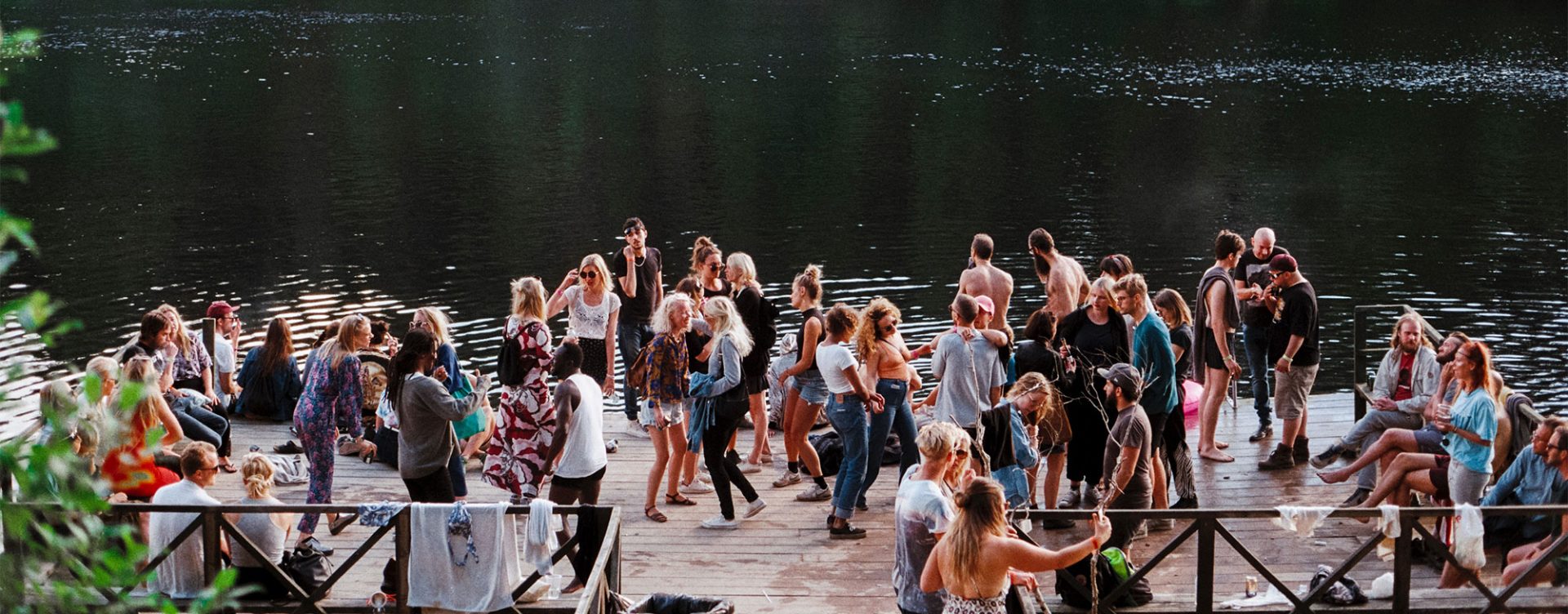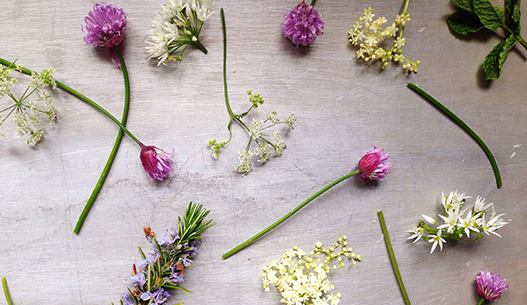Like many European countries, Sweden’s holidays and celebrations are based around the Christian calendar: Christmas, Epiphany, Twelfth Night, Easter and Ascension day are all public holidays. So it may seem peculiar that the Swedes also celebrate a holiday rooted in pagan rituals that predate Christianity. But the summer solstice, or Midsummer’s Eve, is one of the biggest and most anticipated occasions of the year, second only to Christmas.
Celebrated on the Friday closest to the summer solstice (21st of June) it has been a national holiday since the 1950s and is a mix of new and old customs, including some that may seem strange to a foreign on-looker. For Swedes however, it has become an opportunity to mark the start of summer with friends and family and to enjoy dancing, singing and silly games along with a feast of herring and snaps on a day when the sun hardly sets.
The exact origins of ‘Midsommarsafton’ are a little unclear: no one can quite agree on why it is celebrated. Many think the day is connected to ancient fertility rituals that were believed to guarantee a successful harvest. Bonfires were often lit to ward off evil sprits and the darkness of the winter months, a practice dating back to the 6th century AD. These bonfires are still lit in other Nordic countries who also mark the solstice, although the pagan elements of Midsummer have been blurred with the feast of St John the Baptist on the 24th of June. The Finns mark the day as Juhannus, the Danes have Sank Hans Aften and the Norwegians Sankhasaften. However, it is only really in Sweden where Midsummer has remained a major annual event, with uniquely Swedish features and many of the ethereal elements holding firm.
Many thought Midsummer’s Eve had magical properties, with emphasis placed on the healing and health-giving powers of flowers and herbs. Magical events that could occur on Midsummer’s Eve included water turning into wine, ferns into flowers and hidden treasures to be found. It was also a night fortelling futures, for example, young girls would eat salted porridge and go to bed thirsty so that their future husbands could bring water to them in their dreams. A tradition that remains is for young people, often children, to pick seven or nine different flowers and put them under their pillow in order to dream of their future spouse.
Greenery was an important feature of Midsummer’s Eve and to this day, the celebrations centre around a maypole decorated with leaves and flowers, which is erected in a local park or open space. Many households also decorated their homes with branches and flowers. This probably arrived with German merchants who settled in Sweden in the 1600s and brought their tradition of raising a maypole with them. However, in Sweden there are few flowers in May, so the celebration was moved to later in June and merged with Midsummer. Today the maypole is more commonly referred to as a Midsummer pole and has become as symbolic of the holiday as the fir tree is of Christmas.
These days few Swedes feel the need to chase away evil sprits and turn to the healing properties of plants but they relish the opportunity to herald the arrival of warmer, lighter days which is hardly surprising given the amount of the year that the country is plunged into darkness. Many Swedes take their five-week annual leave in the weeks following Midsummer’s Eve, so shops, restaurants and organisations shut altogether while everyone makes the most of the long days at their summer cottages or on their sailboats.
Being outdoors is still an important part of Midsummer’s Eve and an opportunity to enjoy the holiday fully, so urban dwellers always flee to the countryside to celebrate. Cities like Stockholm and Gothenburg resemble ghost towns on Midsummer’s Eve as the mass exodus happens the day before, with many residents clocking off half way through Thursday to beat traffic and prepare for the festivities.
The day will usually start with a family breakfast before collecting flowers to decorate the midsummer pole. Birch tree branches are also used as decor and people make flowery garlands to wear throughout the day. The main event of the day is without doubt a long lunch of pickled herring, complete with crispbread, the season’s first new potatoes with dill, sour cream, chives and more dill. The herring can be flavoured with an array of different tastes: soured cream, curry, chilli, garlic, herbs, pretty much anything goes! There are even recipes for japanese-inspired, teriyaki versions for the more adventurous. Matjes, or soused, herring is also enjoyed in a kind of savoury cheese cake made with rye bread and cream cheese and, of course, more dill.
Following lunch, it is time for everyone to dance around the Midsummer pole, singing traditional folk songs and playing silly games, the most famous of which is undoubtedly ‘Små Grodorna’ or ‘Little Frogs’ which involves jumping around and the lyrics ‘Small frogs are strange to see, they don’t have any ears or tails.’
It is then time to retreat for a restorative ‘fika’, a word to describe the quintessential Swedish coffee break, which normally involves a little something sweet as well. On Midsummer’s this is often a slice of layered Victoria sponge with strawberries and cream. After all this eating (and perhaps a nap) it’s time to think about dinner. Rain or shine, a BBQ is the classic dinner choice and an opportunity for the host to show off and be creative. In the wee hours, it’s time to hit the dance floor properly, ideally an outdoor one with a live band.
Midsummer’s Eve is unique in that it is celebrated with a large community rather than just within the family fold. It is also an occasion for every age: it’s a perfect day for children and families, with the excitement of dancing, singing, games and treats. But with a night that never seems to get dark and plenty of food and live music, it is also a celebration loved by adults. It is particularly well known for being a time for those who are unattached to perhaps find love.
Photo: Steffi Knowles-Dellner
Sourdough crackers and crispbreads
Our hand-baked sourdough crackers and crispbreads are the perfect accompaniment to artisan cheeses, cured meats and dips.
View Range

